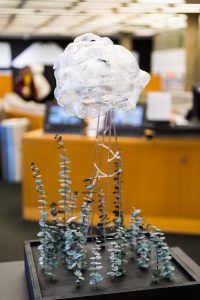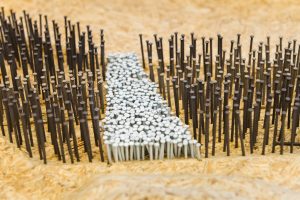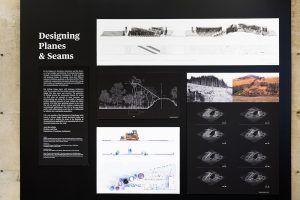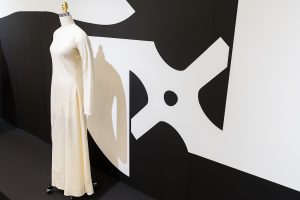Designing Planes and Seams
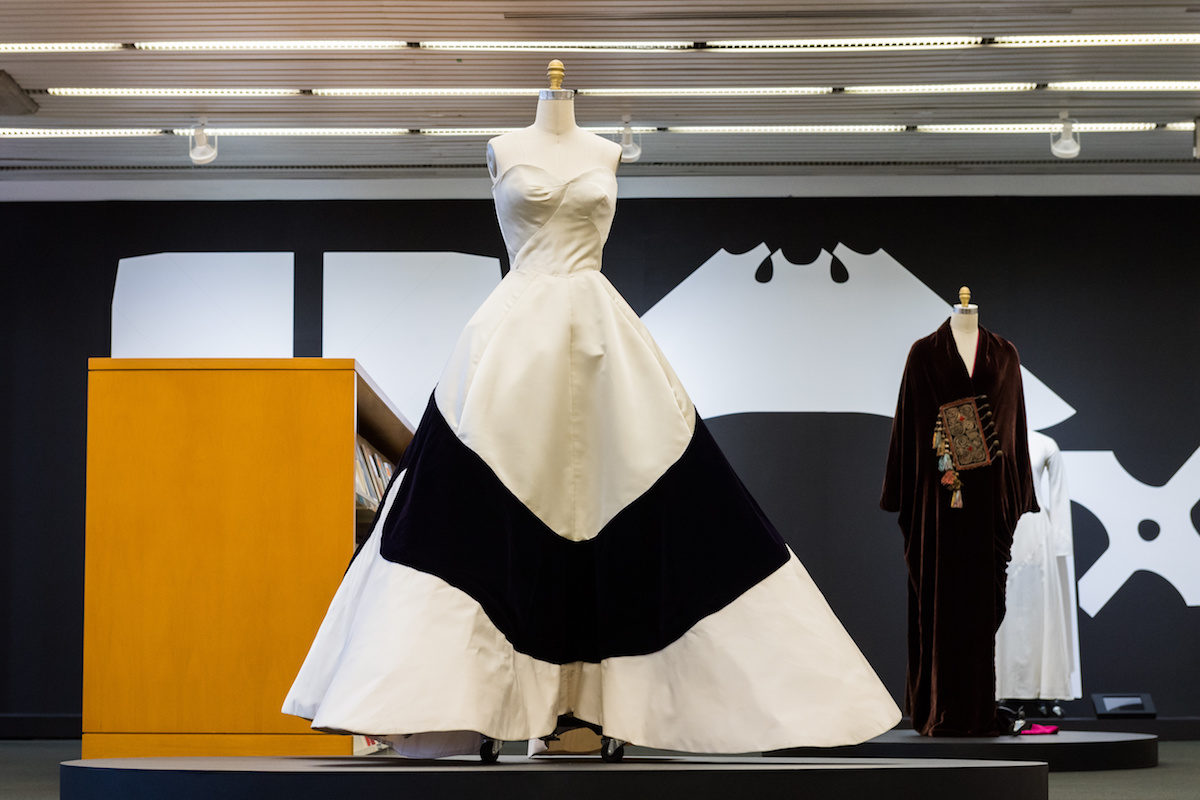
Designing Planes and Seams focuses on the relationship of flat or planar materials and the seaming and construction necessary for creating expressive three-dimensional form. Focusing on the pattern pieces of iconic historic designs, the dressing of the contours of the body is represented by examples of reductive geometry and minimal intervention. In fashion, the pattern piece articulates the designer’s intellectual process as well as the wearer’s form. It is both map and plan.
This exhibition suggests parallels between clothing design and landscape architecture. Both disciplines share formal concerns associated with the creation of material structure(s) to fit an organic body; and in both clothing and landscape, the materiality of form-making is conceived conceptually and tectonically to reflect the bodily needs to move, breathe, and adapt. They also share physical constraints: in clothing, there are constraints of protection from the environment and regulation of body heat; and in landscape, those of ecological process, movement of water, and maintenance of habitat and vegetation. Both incorporate and convey cultural expressions such as identity and personality, social status, group affiliation and ethnicity, gender and sexuality, power and politics, as well as other cultural narratives.
By exploring the meaning of seams, junctures, materials, and form making, the parallels that are revealed between clothing and landscape will expose their shared concerns of cultural production within contemporary society.
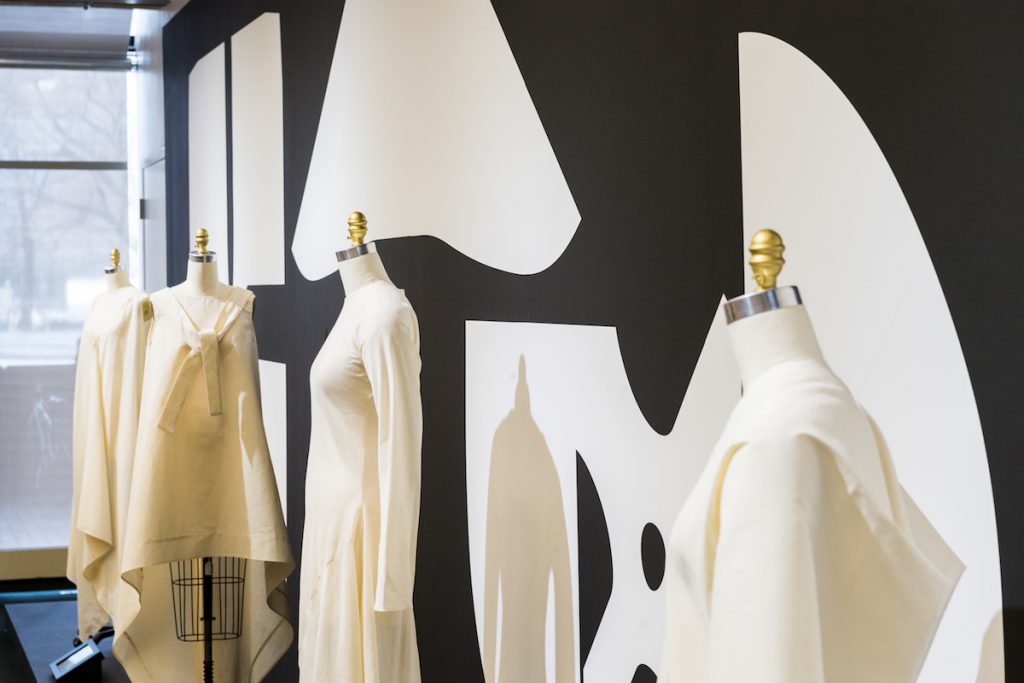 Curatorial Statement
Curatorial Statement
In the design arts, invention, innovation, and the discovery of new insights and methods of working often happen through cross-disciplinary investigation. In both clothing and landscape design, for example, seams join different material conditions, gradients, or directions of flow. When considered comparatively, interpretive frameworks emerge that broaden our imagination and yield new possibilities in the conceptualization of landscapes.
But clothing design shares with landscape architecture more than a concern for how surface materials and process engage with time, space, and structure. The production of clothing involves the environment directly. Its textiles are dyed using vast amounts of water resources, and pattern-making and cutting for the assembly of garments produce significant amounts of waste. Indeed, the fashion industry is the third most polluting industry in the world. Not only are both fields actively working to improve their environmental performance, they will, in the near future, need to work collaboratively to turn what is a 2.5-trillion-dollar industry into a sustainable proposition.
It is a core mandate of the Department of Landscape Architecture to advance design through speculative studios and research, and to redefine the scope of the discipline by demonstrating its applicability in an expanding field of environmental needs across the world.
—Anita Berrizbeitia, Professor and Chair, Department of Landscape Architecture
Credits
Mohsen Mostafavi, Dean and Alexander and Victoria Wiley Professor of Design; Pat Roberts, Executive Dean; Beth Kramer, Associate Dean for Development and Alumni Relations; Shantel Blakely, Public Programs Manager
Exhibitions
Dan Borelli, Director of Exhibitions; David Zimmerman Stuart, Exhibitions Coordinator, Keith Scott MLA I 2017
Installation Team
Ray Coffey, Jesus Matheus, Matt Murphy, Talbot Pennimen, Joanna Vouriotis
Special Thanks to Ken Smith (MLA ’86) and the students in his Fall 2016 Option Studio “Inherent Vice,” and to Harold Koda (MLA ’00), former Curator-in-Chief of the Anna Wintour Costume Institute, Metropolitan Museum of Art, for their interest and dedication to this project.
